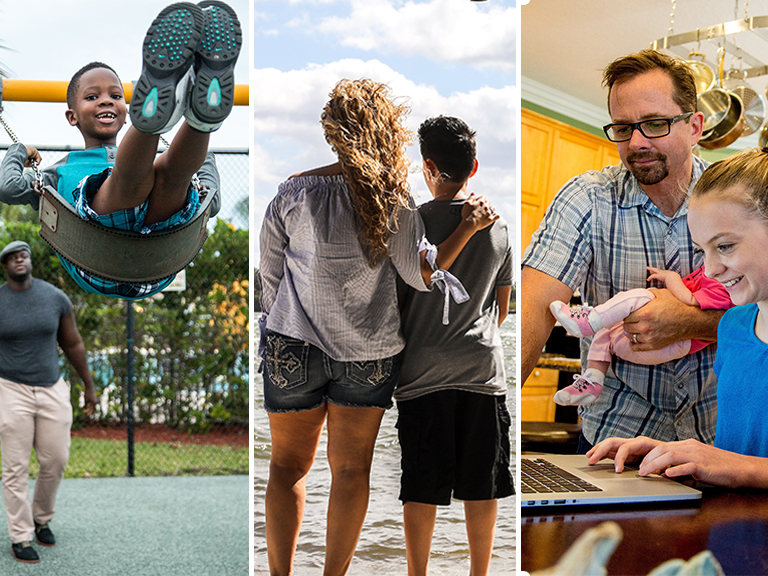- Behavior
- Education
- Health
- Parenting
- Safety
Developmental milestones: from riding bikes to driving cars

Up to age 5 was a period of astonishing physical, emotional and social growth for your child. Although it may seem like your first-grader was just taking his first steps, he’s now mastered the playground.
And your teen? She surprises you by not talking to you one day to asking your advice on colleges the next day. It can be a frustrating yet exhilarating time for children and their parents.
Here’s some insight from the U.S. Centers for Disease Control and Prevention on what’s normal for each stage of your child’s development:
Early middle childhood (6 to 8 years)
Physical, social and mental skills develop quickly, and this is a critical time for children to develop confidence in all areas of life, such as through friends, schoolwork and sports.
Key developmental milestones to look for:
- Showing more independence from parents and family
- Understanding more about their place in the world
- Paying more attention to friendships and teamwork
- Wanting to be liked and accepted by friends
- Demonstrating rapid development of mental skills
- Developing less focus on oneself and more concern for others
Late middle childhood (9 to 11 years)
This is an important time for children to gain a sense of responsibility, along with their growing independence. Also, physical changes of puberty might be arising by now, especially in girls.
Key developmental milestones to look for:
- Forming stronger, more complex friendships and peer relationships. It becomes more emotionally important to have friends, especially of the same gender.
- Experiencing more peer pressure
- Becoming more aware of their body as puberty approaches. Body image and eating problems may start around this age (add local resource here)
- Facing more academic challenges at school. (add local resource or link to story about academic challenges here)
- Becoming more independent from the family
- Beginning to understand others’ points of view
- Attention span increases (what’s normal in terms of attention span? link to story about learning challenges)
Young teens (12 to 14 years)
This is a time of many physical, mental, emotional and social changes. At this age, teens make more of their own choices about friends, sports, studying and school. They become more independent with their own personality and interests, although parents are still very important.
Key developmental milestones to look for:
- Showing more concern about body image, looks and clothes
- Focusing on themselves; going back and forth between high expectations and lack of confidence
- Experiencing more moodiness
- Showing more interest in and influence by peer group
- Expressing less affection toward parents, even to point of rudeness or short tempers
- Feeling stress from more challenging schoolwork
- Developing eating problems (local resource)
- Feeling sadness or depression, which can lead to poor grades, alcohol or drug use, unsafe sex and other problems. (local resource)
Teenagers (15 to 17 years)
This is a time of change for how teenagers think, feel and interact with others, and how their bodies grow. This is also the time to prepare for more independence and responsibility. Many teenagers start working, and many will leave home after high school.
Key developmental milestones to look for:
- Displaying more interest in romantic relationships
- Going through less conflict with parents
- Having a deeper capacity for caring and sharing, and for developing more intimate relationships
- Spending less time with parents and more time with friends
- Feeling a lot of sadness or depression, which can lead to poor grades at school, alcohol or drug use, unsafe sex and other problems. (local resource)
- Becoming more concerned about future school and work plans
- Being better able to articulate reasons for their own choices, including about what is right or wrong
SOURCES:
• Centers for Disease Control and Prevention, U.S. Department of Health and Human Services
• Mental Health America of Palm Beach County
• Palm Beach County School District’s guidance program
